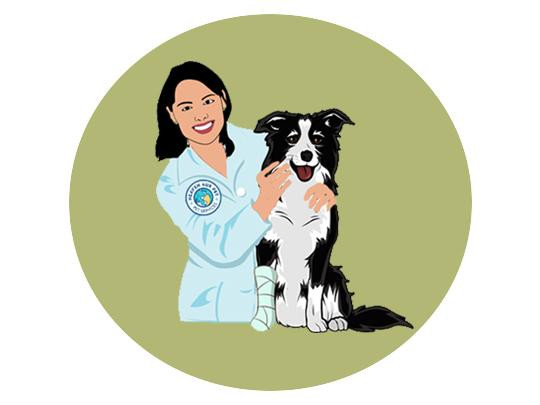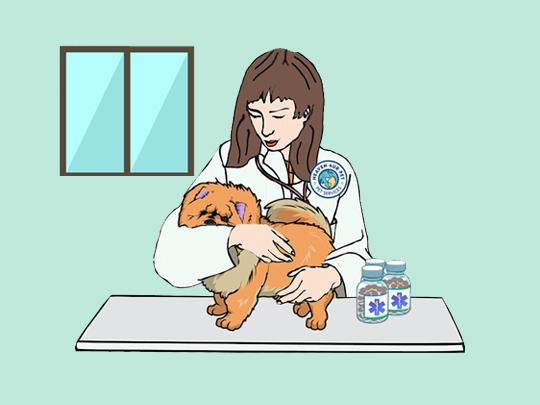TREATMENT OF FRACTURES IN DOGS
One of the main demands that veterinary clinics and hospitals receive daily in their emergency care is a canine fracture. There are many situations that might lead to this, after all, dogs, in nature, are known for their passion for venturing. And, between jumps and disoriented runs, they can end up fracturing some part of your body.
Added to this, the fact that many animals that end up suffering serious fractures are victims of being run over, which is even more serious since some accidents can lead to open fractures or even amputation of the paw. In the worst case, the animal may end up being killed, depending on the strength and how it was run over.
Since this is a demand that every vet has to deal with daily, professionals in this field, need to diagnose and treat the fractures they come across. In this article, we will talk about the main causes of canine fracture, how to diagnose and treat it, as well as showing you how to guide tutors on the importance of prevention.
WHAT ARE BONES AND WHAT ARE DONE
Before we talk about the care and causes of fractures, let's introduce you to a little bit of what bones are like. Bone is a biomaterial with numerous functions. This starts from supporting the body to being a mineral stock, it also works to produce blood cells such as the red group or red cells (erythrocytes, hemoglobin) and the white group (defense of the organism such as leukocytes, lymphocytes that produce the antibodies and platelets that work during the process of coagulation), either of these is produced in the bone marrow (referred to as the marrow). The bone mainly consists of calcium, collagen, and other minerals; this work to make the bone flexible and strong.
WHAT ARE THE MAIN CAUSES OF CANINE FRACTURE?
The canine fracture is the result of intense stress, or impact, on the bones of the small animal. This stress can originate from compression, tension, bending, shearing, and torsion. The bones that have the most chances and are the ones that are most fractured are the longest. The femur, for instance, is a bone that is mostly affected in close to half of the times, and the radius, tibia, and ulna (forearm) follow suit. But, instances of fractures of most limbs, such as the hips, jaw, and spine, aren’t rare in traumatic accidents, such as being hit by a vehicle.
We can give examples of what are the main causes of canine fracture, the following:
• A jump from small heights, such as sofas or beds (especially smaller ones);
• Jump on hard surfaces;
• Anterior fracture or bone tumors in the same region;
• Run over;
• Collision with other dogs (especially the biggest ones) in parks or squares;
• Malnutrition, since the lack of nutrients, can lead to the weakening of the animal's bones;
HOW QUICK DIAGNOSIS CAN HELP MINIMIZE IMPACTS
Pet owners head to the vets when an accident occurs when they notice the dog behaving abnormally, they may either start to limp or find it difficult moving around because of the pain. When dealing with an incident about a fracture, in the vet’s, it is important that the vet does tests and treatments begin immediately to prevent more harm being passed to the dog.
For the fractures, an x-ray examination is needed at first, this should help you confirm the existence of the injury.
Likewise, veterinary ultrasound has also been widely used to identify fractures due to its high degree of reliability, precision, and multiplanar images, which allow observing if there was any interference in the muscles, tendons, and blood circulation.
Fractures on canines can be categorized into two, which are the type of open (open) fractures and the closed ones. For an open fracture, the wound might be contaminated with dirt or bacteria, this may lead to infections, which necessitate urgent care for the dogs.
Treatment on bone injuries will be determined by a variety of factors that will depend on the choice of treatment, such as the size, age, activity of the pet, and the type of fracture in question. In most situations, inserts of pins, plates, screws, and stainless steel wires are made, in order to keep the dog's bones in the correct places. Amputation surgeries may be needed depending on the impact on the bone.
HOW TO GUIDE TUTORS AS TO PREVENTION
The best method of reducing the impact of canine fracture is guiding tutors on the essence of prevention. Whoever owns a small dog should be more careful, because it has a structure that is more fragile, which makes them the more prone to becoming victims of this type of problem. Some of the breeds that suffer most from the fracture are:
• Maltese;
•German Spitz;
• Pekingese;
•Lhasa Apso;
• Yorkshire;
• Shih Tzu;
• Poodle;
• Chihuahua,
• Pug.
But, there are several small breeds, puppies, and even smaller SRDs, which are vulnerable to being affected by fractures.
Some basic care for pets can be essential for you to avoid falls and impacts, such as:
• Prevent your dog from climbing at heights where he can fall and be injured;
• Do not leave small dogs or puppies in the hands of children;
• Watch out for walks where there is a lot of movement of people and other dogs;
• Do not walk the dog outside the guide, to avoid being run over;
• Encourage physical activity to strengthen bones and joints.
Fracture of the canine is not rare, and it needs treatment with immediate action to avoid more damage from happening. Therefore, it is essential to invest in knowledge of inaccurate diagnostic imaging techniques, such as veterinary ultrasound.
CONCLUSION
With this, we conclude the tips and care that you should have with your pets. We are hopeful that with this article, we have assured you about what is needed in case of a bone fracture and what are the best steps to take in this case.


